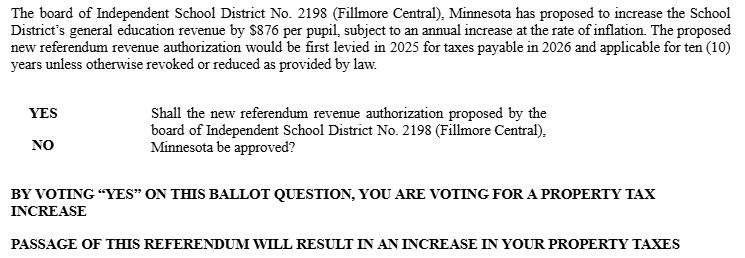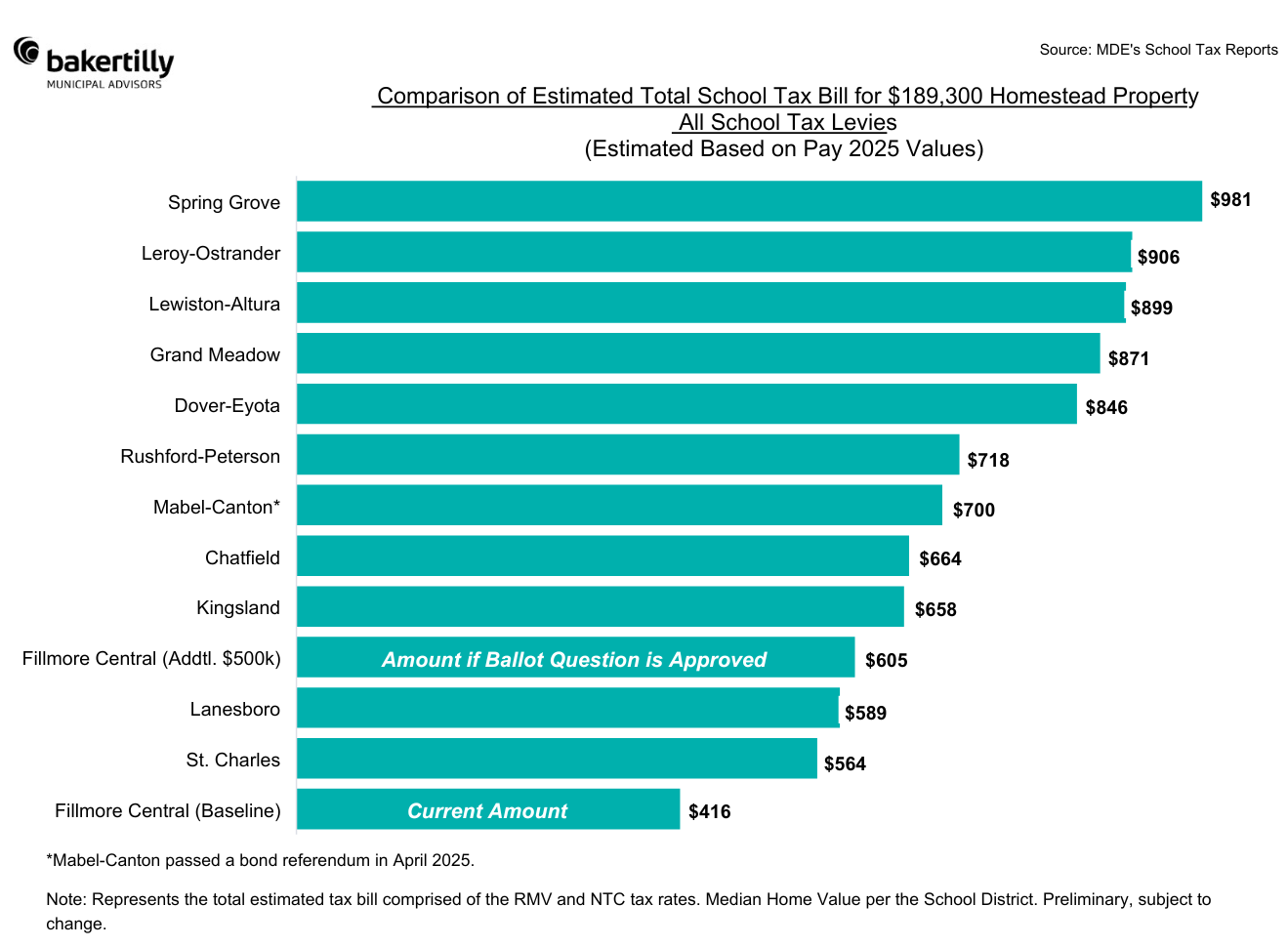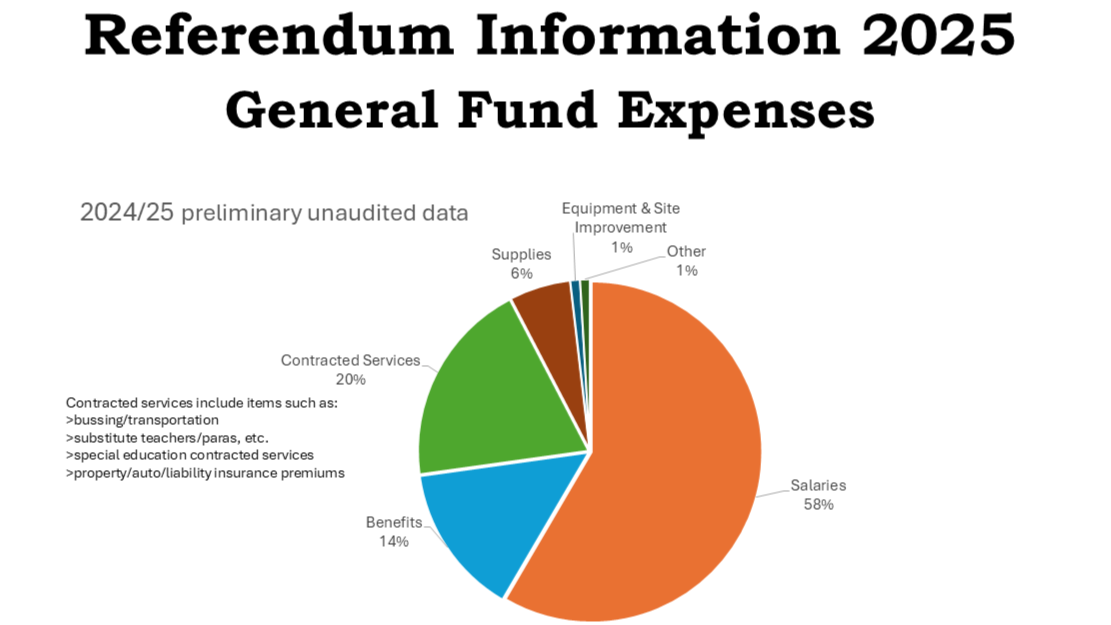The ballot question:
$500,000
Based on enrollment projections, this is how much additional funding would be generated in the first year if the new levy is approved.
Is there a particular project that this additional funding, if approved, would be allocated to?
No. This is not a building bond referendum. Instead, this is an operating referendum, which helps fund the day-to-day operations of the district. This includes teacher and staff salaries and benefits, supplies, utilities, curriculum, transportation, co-curriculars, and so much more.
How does Fillmore Central’s current school tax bill compare to those of other local school districts?
Currently, Fillmore Central has the lowest operating levy per student when compared to other local school districts that also receive funding through an operating levy.
Above we’ve included a comparison chart. Don't worry if you're unsure about what it means—you're not alone, and we're here to help clarify!
The median value of a residential home in the Fillmore Central school district is $189,300. The chart compares the estimated total school tax bill for a home at that value across surrounding school districts. This homeowner is currently paying about $416 per year in taxes to support the school district. If the proposed operating levy is approved, this homeowners’ total school tax bill would rise to about $605, which is still lower than most nearby districts, with Fillmore Central remaining in the lower half.
Why does Fillmore Central need additional funding?
Fillmore Central continues to see declining enrollment, which results in a loss of general fund revenues from the state. Fortunately, our enrollment remains steady enough that revenues still support many expenses; however, revenues and fund balances won’t be able to keep up with rising expenses due to the costs of inflation. If approved, this additional funding would be used to maintain our current day-to-day operations into the future.
This isn’t the first time the district has asked for additional funding in recent years. What changes have been made to increase revenue and/or decrease expenses with the previously failed referendums?
Recently, two elementary classroom teaching positions were eliminated. In the ‘24-’25 school year, the two elementary classrooms had a 17:1 and a 15:1 student-to-teacher ratio. In the ‘25-’26 school year these same classes have a 25:1 and 23:1 student-to-teacher ratio. In the past we were fortunate to keep our student-to-teacher ratios low; however, decreases in revenue have resulted in the need for a reduction in teaching positions.
For 8 years, all Fillmore Central students have been able to participate in activities, free of charge. Beginning in the ‘25-’26 school year, activity fees have been reinstated. Fees were reinstated at the same rate families were last charged during the ‘16-’17 school year. Currently, the fees are waived for families who qualify for free meals and the fees are reduced to half for families who qualify for reduced-price meals.
A 3.75% software administration fee has been added to all online payments processed through RevTrak. For several years, the district absorbed this cost; however, during the May school board meeting, the board approved passing a portion of the cost on to users of this service. To avoid the fee, payments can still be made by check or cash and sent via mail or dropped off at any school office.




